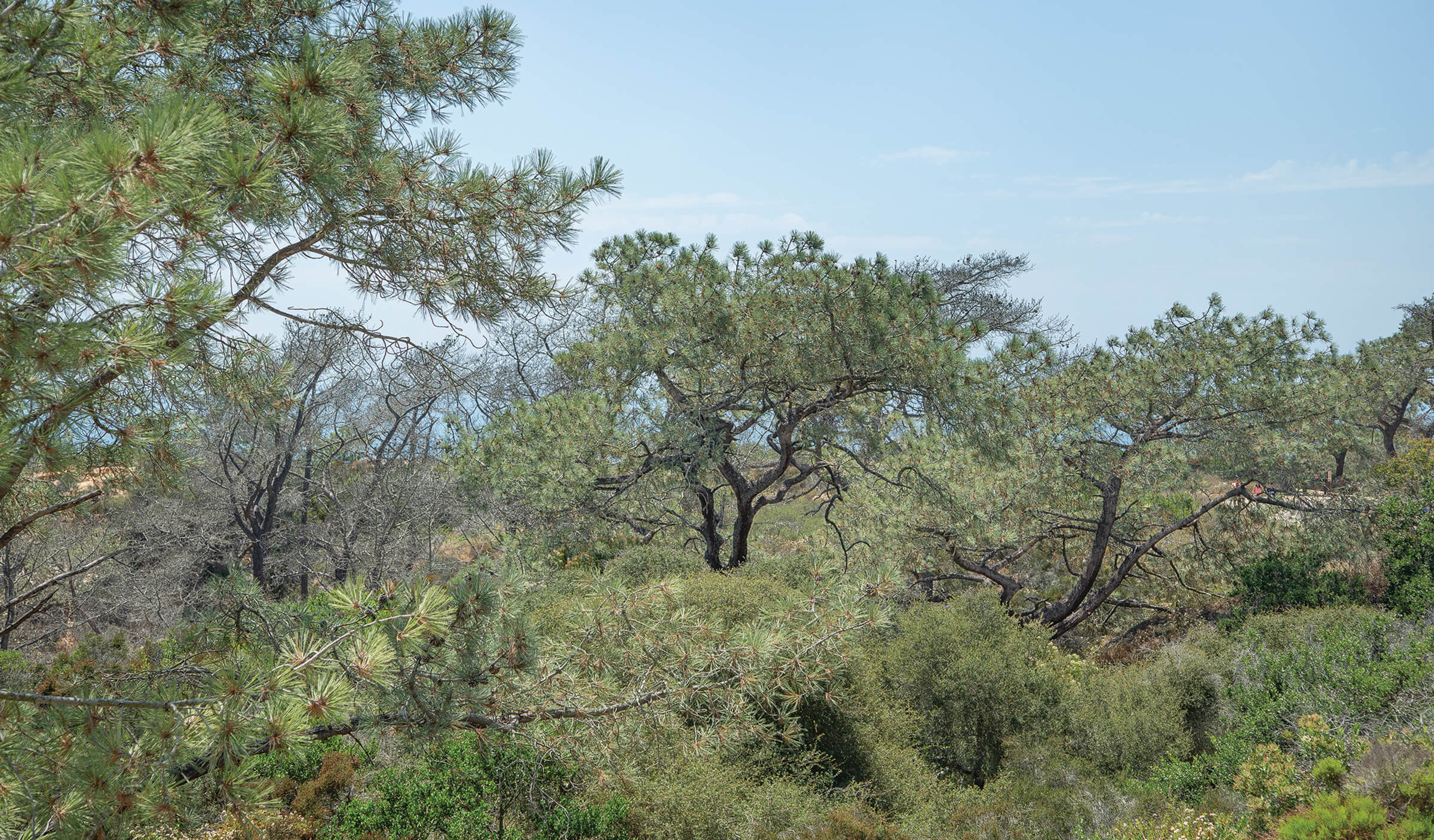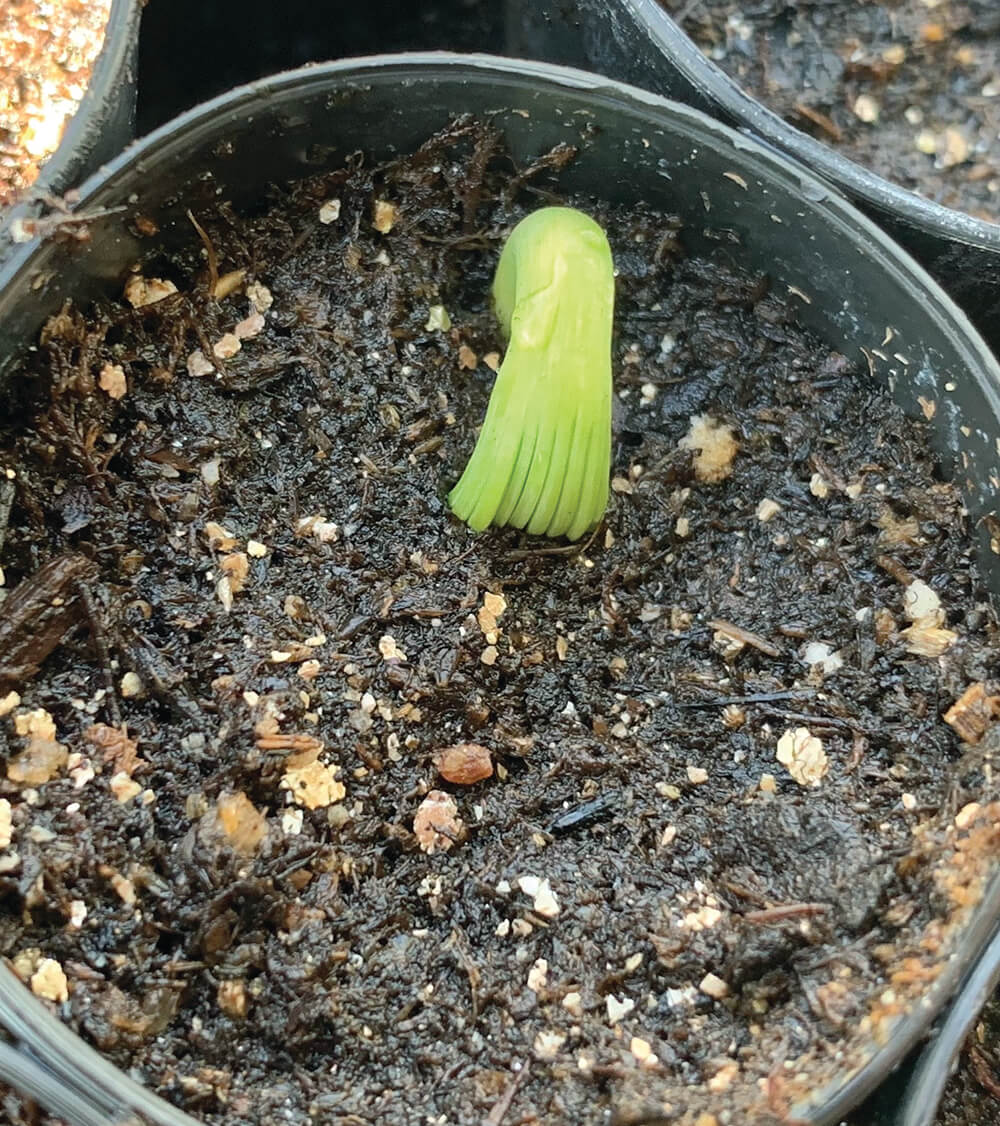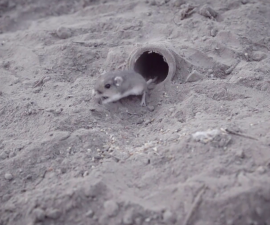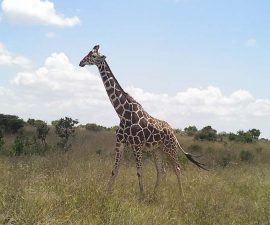BY Stephanie Steele and Christa Horn
With its long, needle-bearing branches twisting into unique shapes, and its growth amongst picturesque sandstone bluffs, the Torrey pine Pinus torreyana is a beloved San Diego icon. The species is a Southern California endemic, growing naturally only along the central coast of San Diego County and on Santa Rosa Island, 173 miles off the coast of Santa Barbara. This rarity has garnered the Torrey pine status as the rarest pine in North America.
The species, however, is also in peril. The effects of drought and bark beetle outbreaks have already taken a noticeable toll on trees on the mainland, a combination that will worsen with increasing climate change. To mitigate these threats, our team in Plant Conservation at San Diego Zoo Wildlife Alliance is partnering with scientists at California State Parks to work toward preserving this local charismatic conifer.
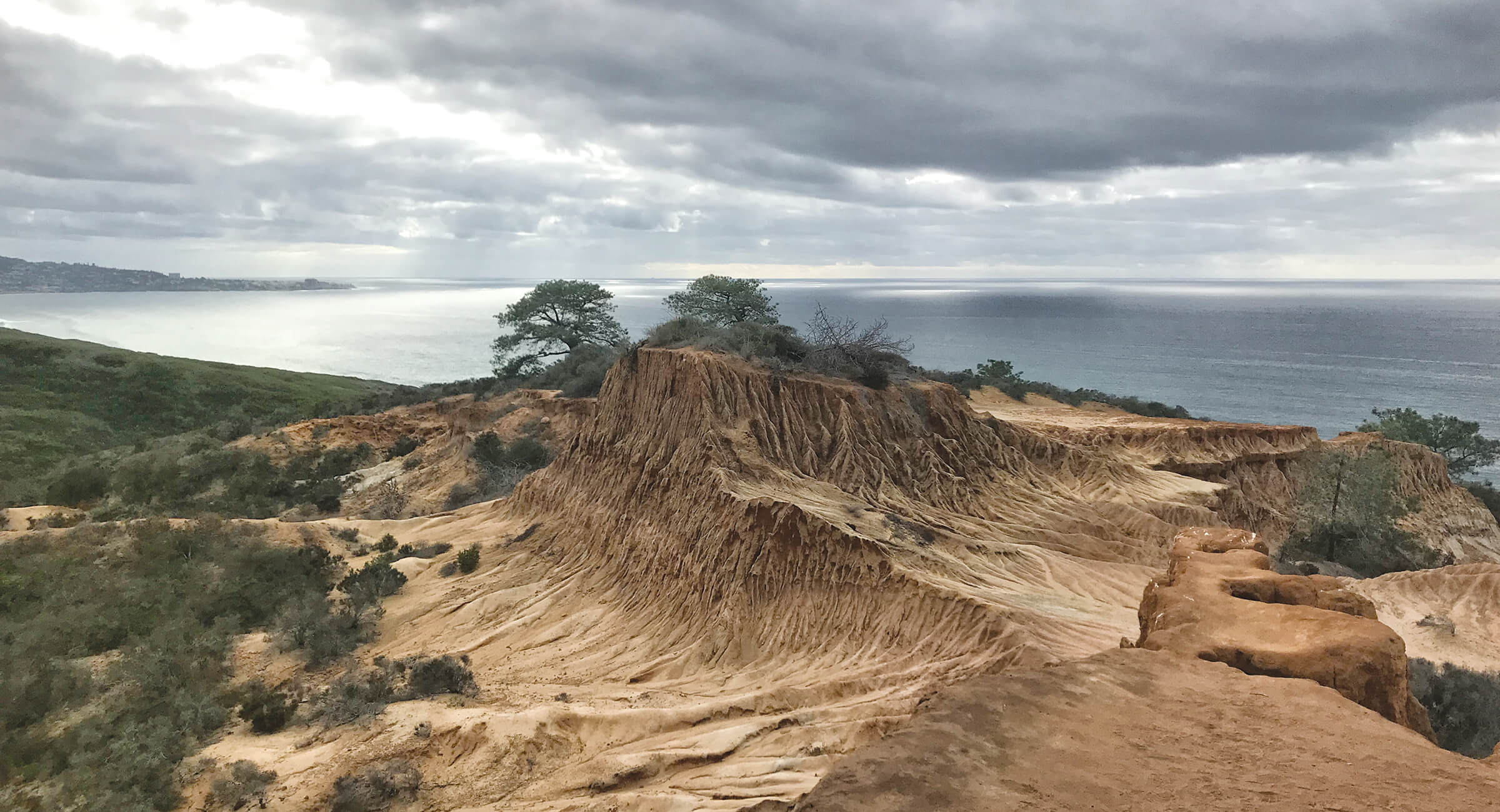
SAN DIEGO NATIVE
The windswept habitat of Torrey Pines Reserve is one of just two places on Earth that are home to native populations of Torrey pines. (Photo by Stephanie Steele)
Double Trouble
Like many conifers in our region, Torrey pines are experiencing a warmer, drier climate that weakens trees and provides conditions favorable to bark beetle pests. Without sufficient water, trees may be unable to produce enough oleoresin, a viscous substance that acts as a chemical defense and a means of physically flushing beetles from trees. Individual beetles are only millimeters long, but they can recruit mass numbers through pheromone signaling. With substantial numbers of beetles tunneling into and feeding on inner bark tissues (critical for the pines’ normal growth and development), the pests can overwhelm a tree’s defenses and take it down.
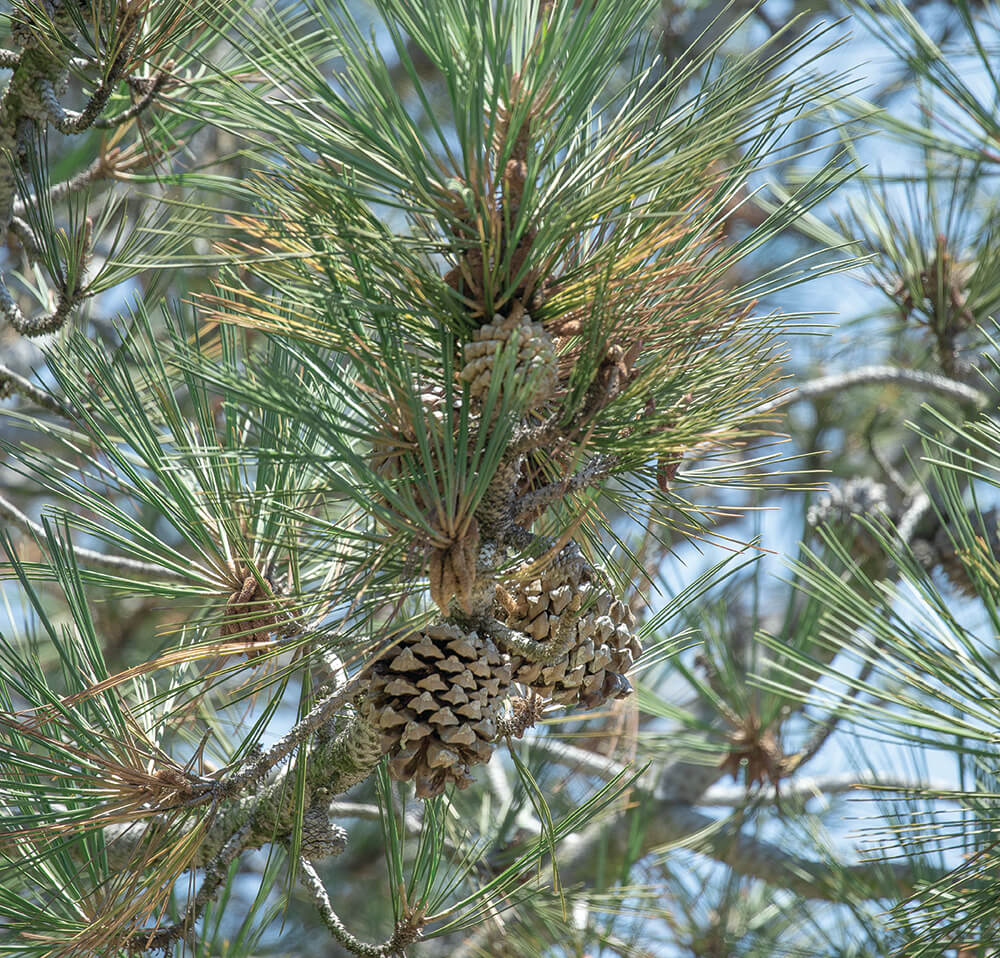
SEEDS WITHOUT SHAME
Like other conifers, P. torreyana bears seeds on cones, not inside fruits. The term for this group of plants, the gymnosperms, comes from Latin words for “naked seeds.” (Photo by Tammy Spratt/SDZWA)
For mainland Torrey pines, the native California fivespined ips beetle Ips paraconfusus is a formidable pest. When the trees are stressed, the beetles can reach overwhelming numbers. From 1988 to 1992, around 12 percent of P. torreyana in the Torrey Pines State Natural Reserve were lost due to an I. paraconfusus population explosion following a windstorm. In recent years, a combination of drought conditions and a resurgence in beetle numbers has left large stands of dead trees visible throughout the reserve.
Yet, optimism for the Torrey pine remains. To keep beetle numbers in check, California State Parks has maintained pheromone traps throughout the reserve to lure and capture the tiny pests. To further support the pines, our Plant Conservation team is also pursuing genetic studies, as well as a seedling reintroduction program to restore key habitat and understand more about the species’ ability to adapt in the face of stress.
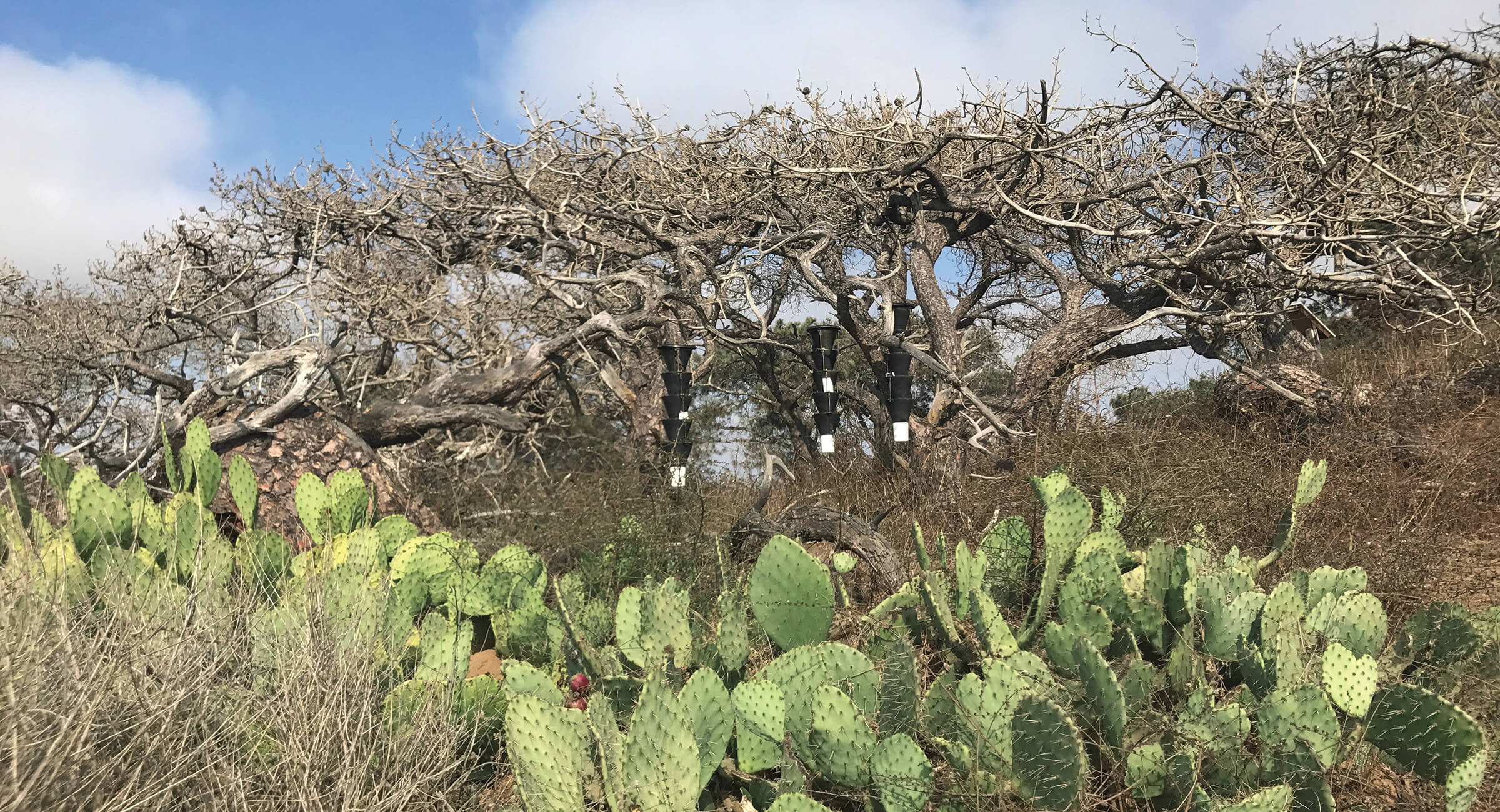
PRESERVING THE RESERVE
At Torrey Pines State Natural Reserve, chains of black containers hang from pines that have been killed by bark beetles. The contraptions are pheromone traps that lure and capture the pests. (Photo by Stephanie Steel)
 Cones of the Torrey pine take about 3 years to mature; the seeds are slowly released over a 10-year span.
Cones of the Torrey pine take about 3 years to mature; the seeds are slowly released over a 10-year span.
Delving into the Genome
To test whether Torrey pines can adapt to their bark beetle pests, we can look to their genomes. While the environment is expected to play a large role in tree response to beetles (access to water allows for resin production), genetic makeup may also play a role by shaping chemical and structural traits that contribute to pest defense. Because genetic variation is the stuff of evolution, the amount of genetic variation in a species can signal its potential to adapt. In the case of Torrey pines, however, past genetic studies have indicated a remarkably low level of diversity—every individual within a population was identical for the genetic markers tested, though only a few markers were examined. For our study, a genome-wide survey of diversity, we honed in on regions that may be involved in adaptive responses by sequencing RNA, or genetic material that only includes the expressed genes in a tree. Our goal was to test whether there are genetic differences between trees that appear healthy and trees that succumb to bark beetle attack.
To test this question, a team of Plant Conservation staff and motivated San Diego Zoo Wildlife Alliance volunteers took to the field. We searched for and mapped beetle-infested trees, took simple baseline tree measurements, and collected genetic samples throughout Torrey Pines Reserve from pairs of trees with and without evidence of beetles. To preserve the fragile RNA before shuttling samples back to the lab, tissue samples were flash frozen in liquid nitrogen.
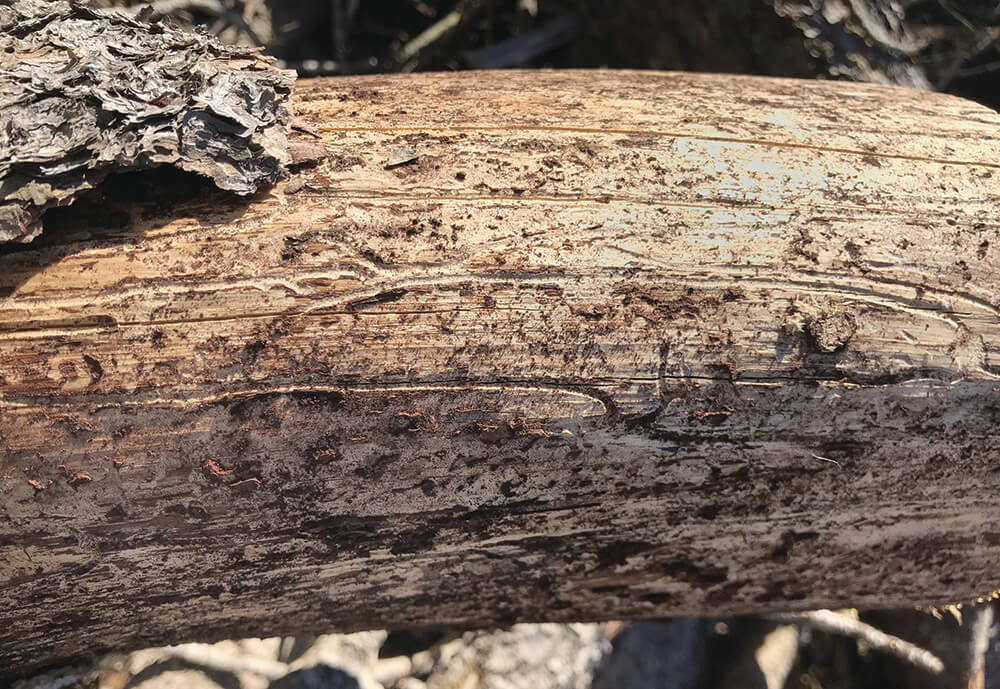
TRACKS OF MY TEARS
Bark beetles tunnel into and feed on a Torrey pine’s inner bark tissues. You can trace the bark beetle damage on this tree. (Photo by Stephanie Steele)
In line with previous work, our findings suggest that Torrey pines have low genetic diversity in gene-coding regions across the genome, suggesting limited adaptive potential. However, we did find genetic differences in attacked and surviving trees with multiple genes related to potential defense functions, suggesting there may be some capacity to adapt to bark beetle pests. This study is a first step, however, and to confirm these findings, additional genomic work and controlled greenhouse studies are needed to test whether genetic variation is related to pest resistance and susceptibility. In this way, we can use genetic information to ensure that seed collections protect key genotypes and the full spectrum of genome-wide diversity that can be used for the restoration of wild populations. In the meantime, we are getting started with restoration research as well.
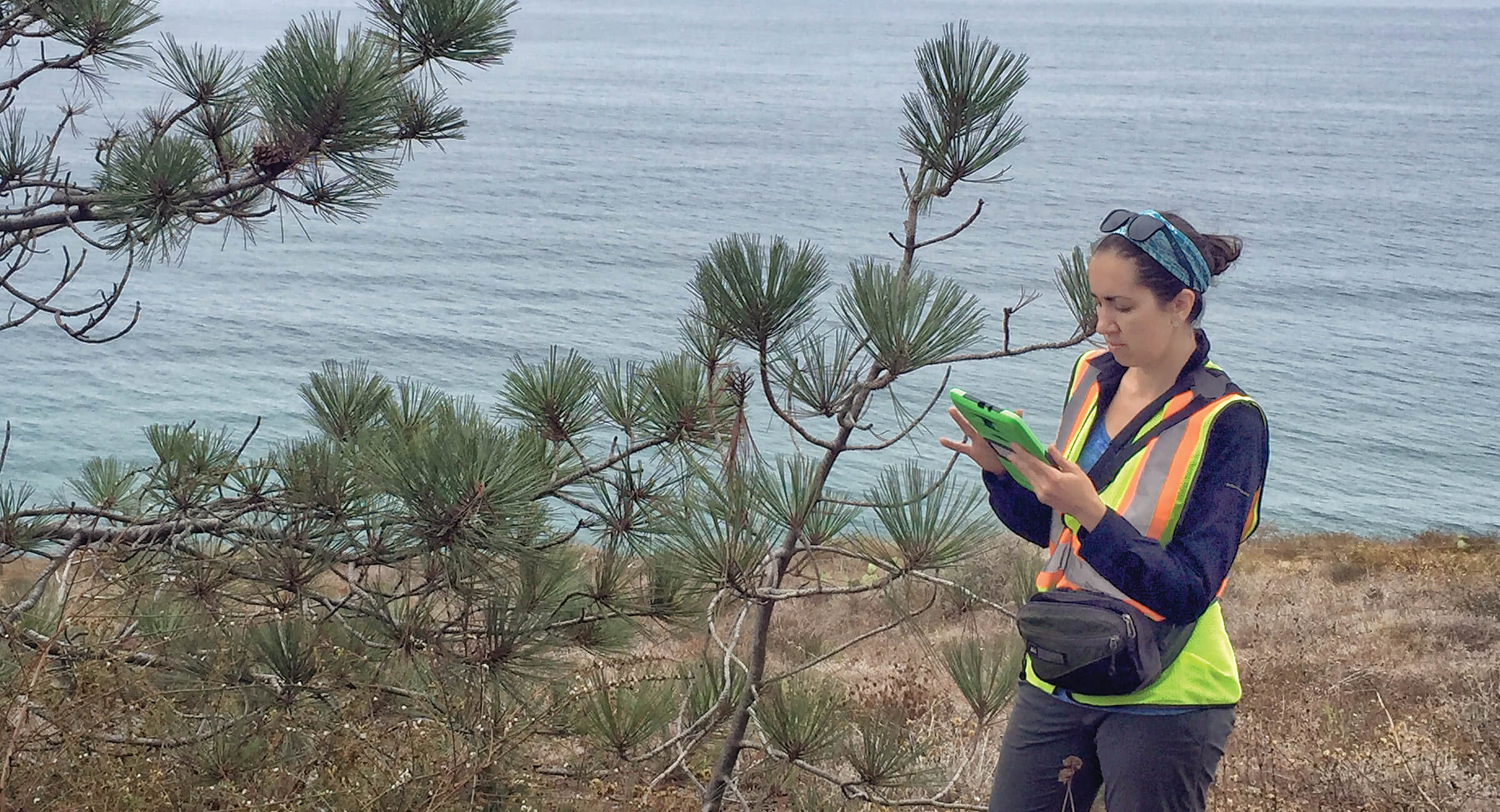
IN-DEPTH ASSESSMENT
Gathering data on Torrey pine saplings helps our conservation team determine the best conditions and micro-locations for future restoration. (Photo by Christa Horn)
Restoration Through Science
Perhaps no location better illustrates the threats weathered by the Torrey pines than the Guy Fleming Trail in the state reserve. Once sprawling with magnificent, wind-carved trees in one of the most iconic lookout points in the reserve, many trees near the coastline have now succumbed to drought and bark beetles. The breakdown of the trees has left the soil with moisture-trapping litter, and the skeletons of the former inhabitants provide some shade and shelter. It seems a prime location for the restoration of Torrey pines—whether it is or not, is one of the questions we are working to answer.
Though the past century has seen many pines placed in the park, little is known about these plantings. While we see the results of the successful plantings, unsuccessful efforts can also be informative—helping us learn what exactly a Torrey pine needs to survive. Thus, we are working with scientists on the reserve to initiate an experimental restoration plan.
The restoration plan will build on what we already know about Torrey pines as well as the threats pressing down on them, like beetles and climate change. First, we have developed a habitat distribution model to help identify some of the environmental factors (such as soil type, temperature, slope, and elevation) that these pines prefer, and where they occur. Some of the areas identified currently sustain trees, others supported trees recently (like the Guy Fleming Trail site), and some have not supported trees before. However, this winter, all three area types will receive new seedlings—over 450 of them! Tracking the seedlings’ survival and getting a finer-scale look at the conditions they encounter will help us figure out a bigger plan for restoring trees across the park, taking into consideration what and how conditions may shift with climate change.
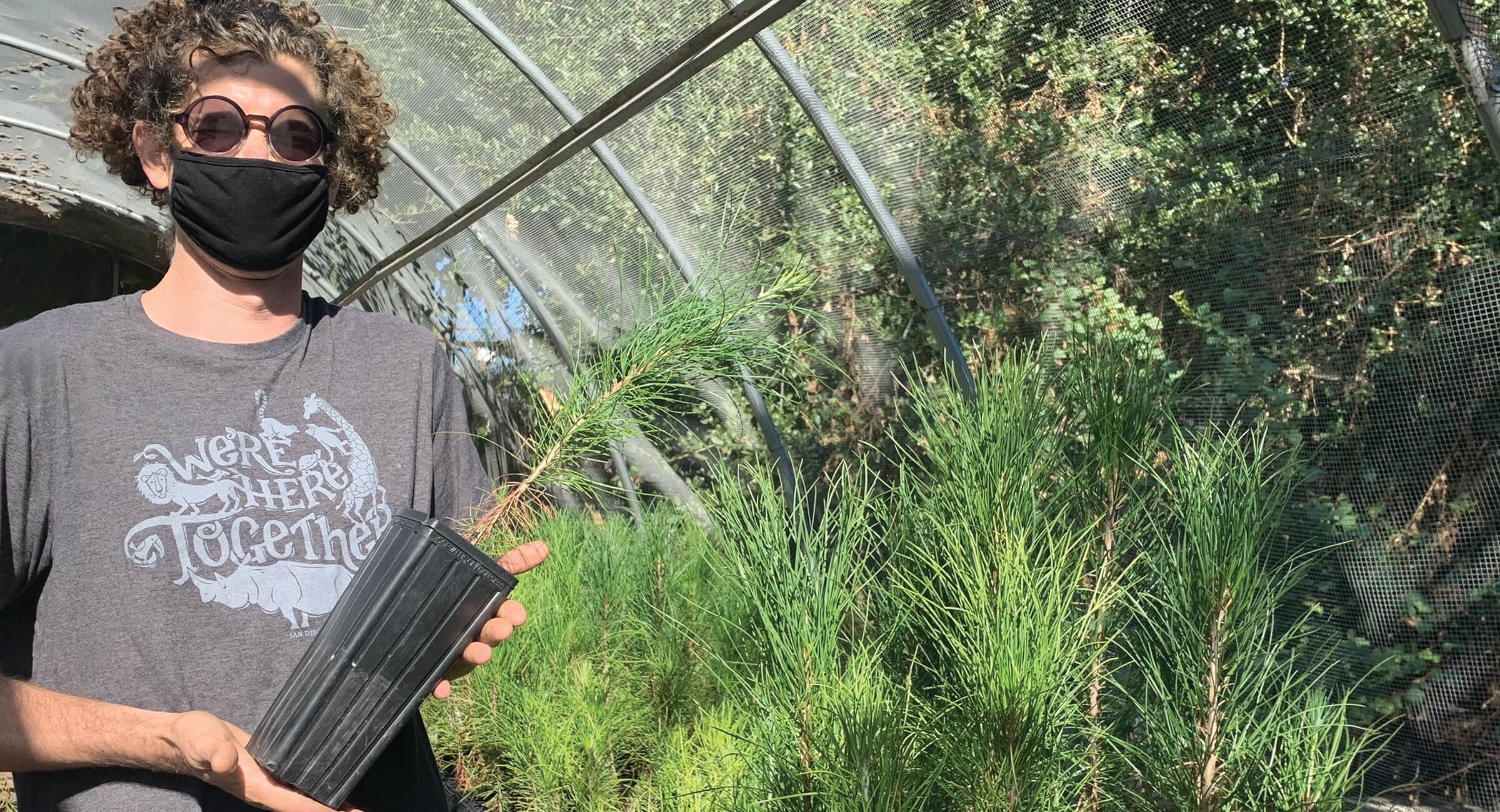
FUTURE FOREST
Seedlings in our conservation nursery are destined for Torrey Pines State Reserve. Once planted, growth data on the little trees will help us plan for how to continue to conserve these icons of San Diego County. (Photo by Stacey Anderson)
Rooting for the Future
Our work, both in the lab and in the field, increases our understanding of these awe-inspiring trees. It also can help inform the management decisions of the Torrey Pines State Natural Reserve staff, who support the trees. We all want to ensure that this botanical icon is around to benefit future generations.

